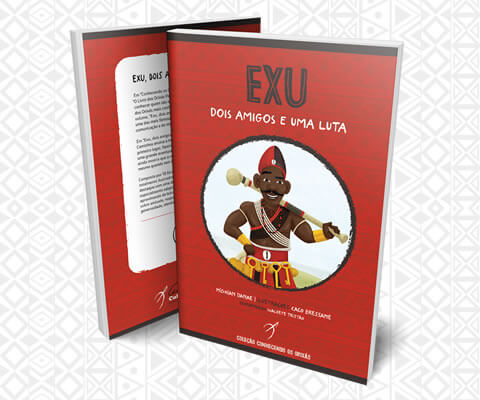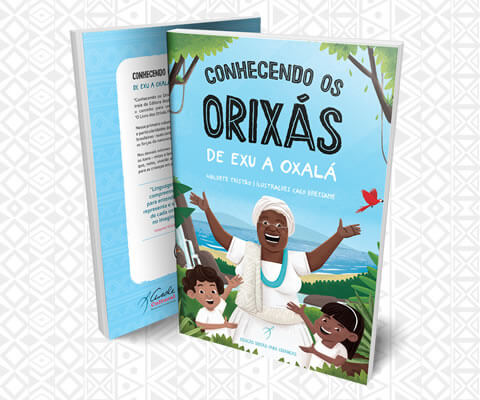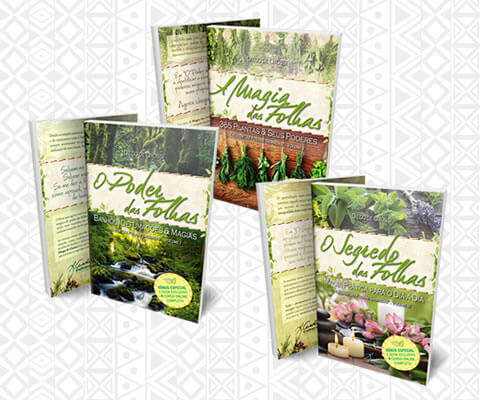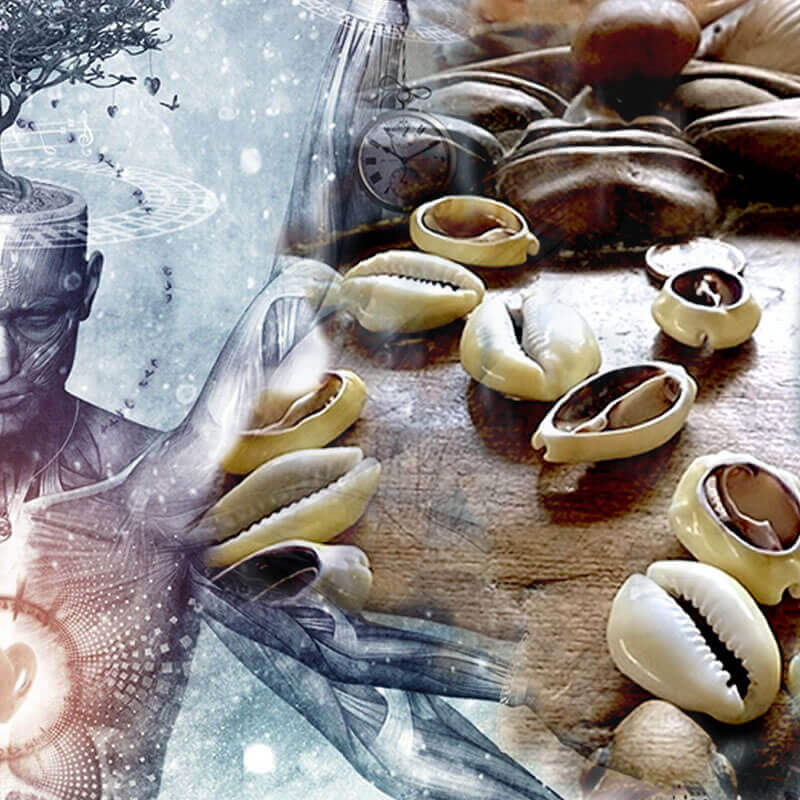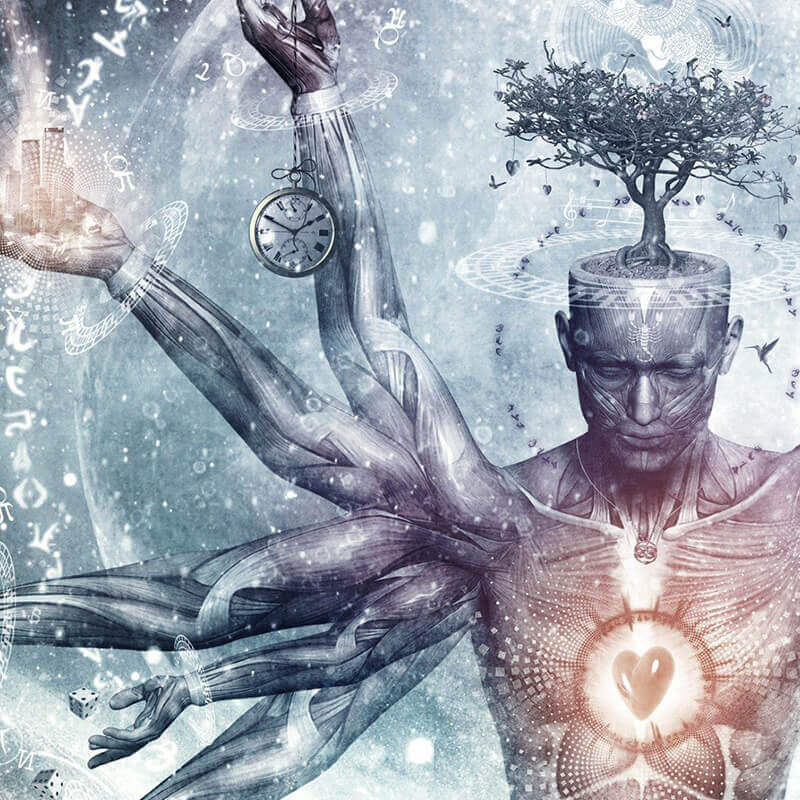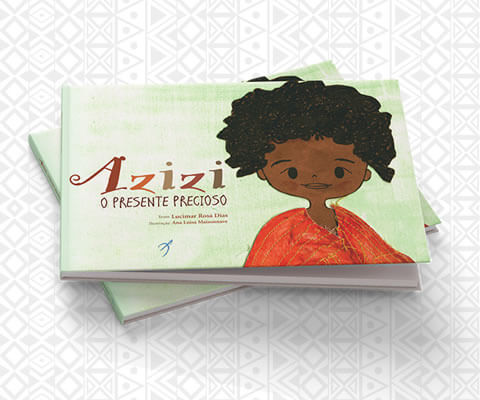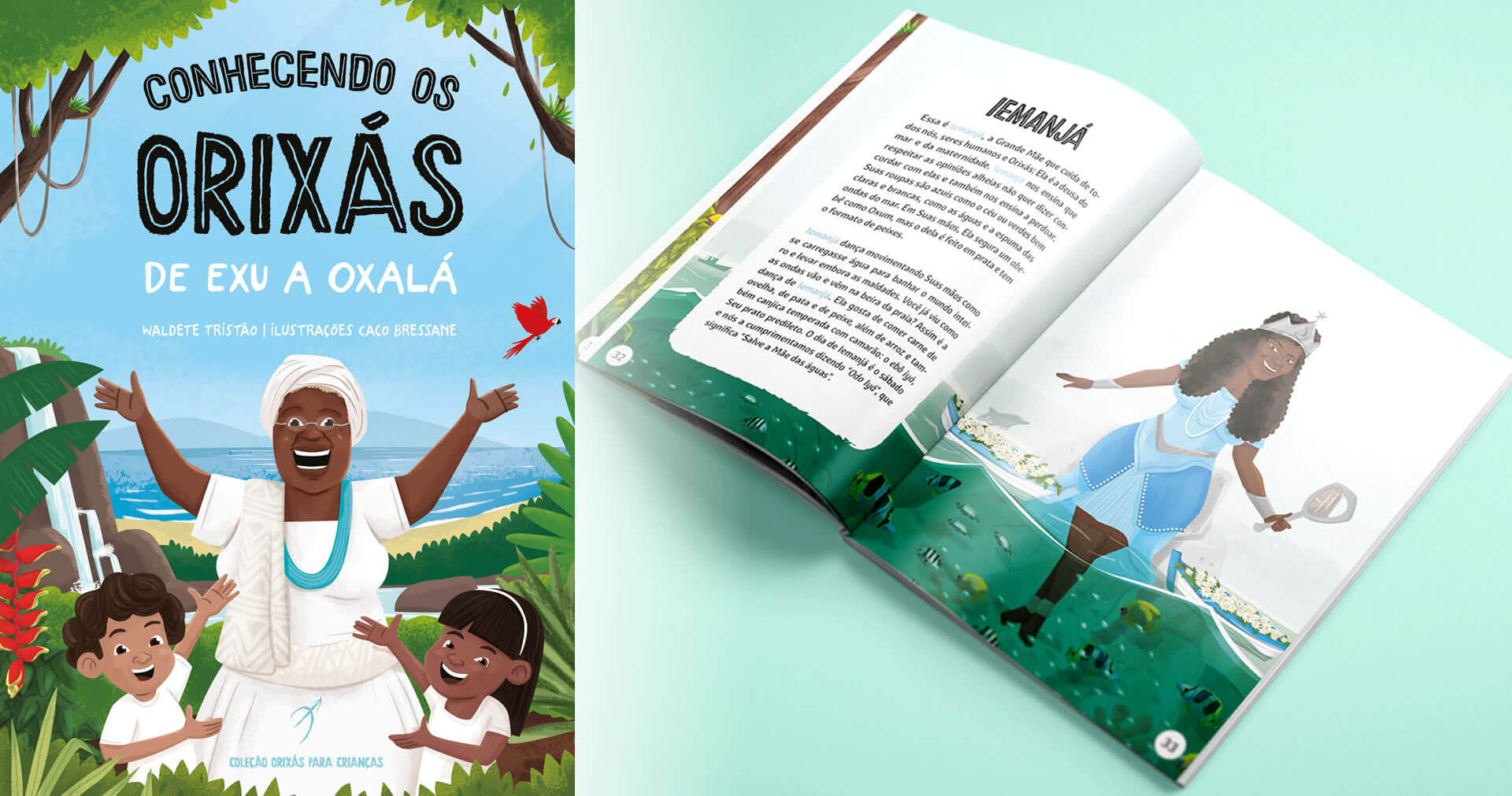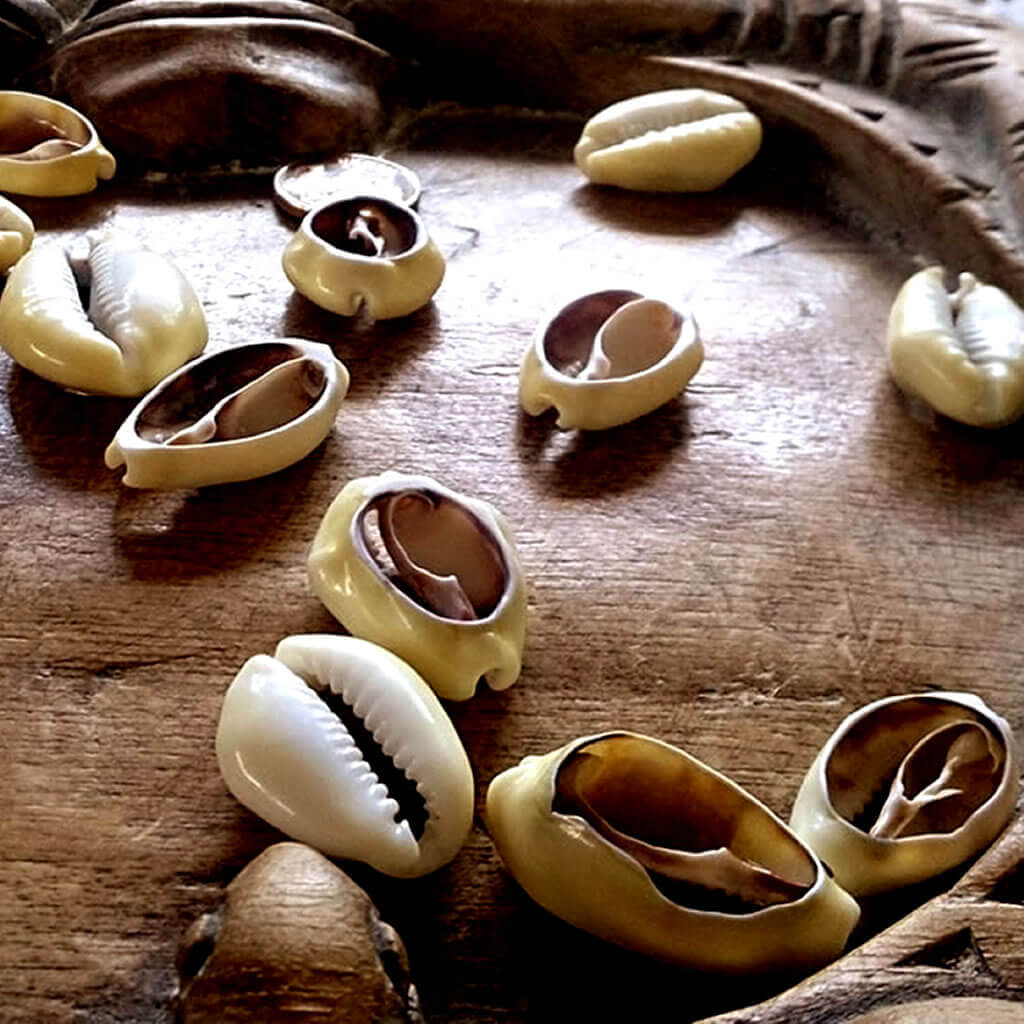Clipping | A mother, a son and the Orishas
‘Knowing the Orishas, from Eshu to Oshala’ if the first title of an 18 children book series and is on the shortlist for international prizes in Italy
It was the year of 2006. Róbson Gil Farias de Oliveira, 14, arrived home. He told his mother that he was going to be Zeus at the school theater. The conversation that night was about mythology. "He who would interpret the (Greek) god of thunder was able to locate in Xango very similar characteristics," remembers his mother, Mrs. Waldete. From that conversation came the idea of ​​a book about the Orixds, the divinities of African-born religions - and later on the faith followed by the family. It was then combined: she would write the stories, he would illustrate them.
More than 13 years have passed since the birth of the idea. "Knowing the Orishas, from Eshu to Oshala" left the imaginary world and became reality. More than fulfilled the dream, the idea of ​​mother and son goes beyond: competes for the prize of the best publication of the year at the Fair of the Children's Book of Bologna, Italy, which will be in April. The publication, launched in December 2018, passed the mark of two thousand copies sold in less than two months.
The book will be published by the publisher Arole Cultural in a collection called "Orishas for Children", with 18 titles detailing the itans - legends transmitted from generation to generation. The protagonists of the stories are always Orixás. The next one is "Eshu, two friends and a fight", by Mighian Danae.
Who coordinates the work and wrote the first book in the collection is Róbson's mother, as it was combined between them back there. In addition to the old commitment to her son, Waldete Tristão has a long history related to early childhood education: she has been teaching for more than 30 years in the municipal public network of São Paulo, she is also a PhD in Education from USP (University of São Paulo) and a Master in PUC (Pontifical Catholic University of São Paulo).
"It does not mean taking religion into the school, that's bringing ancestral knowledge to children", Waldete argues. According to the author, prejudice and racism make content that formed our society to be ignored. "It is not a question of replacing a Eurocentric paradigm with an African, but rather of giving access to and guaranteeing those knowledges that have been denied (to the students)", she says.
Since 2003, Law 10,639 makes the study of Afro-Brazilian and African culture and history compulsory, but in practice this is not always the case. "Teachers say they are unprepared because they did not receive this initial training and say they do not know how to take it to the classroom ... However, the Education Departments should account for this continuing education and ensure that this theme is accessible to everyone", she argues. "Complying with the law is not a choice, it is the professional's obligation", she adds.
The proposal to make the collection "Knowing the Orishas, from Eshu to Oshala" is to broaden the understanding even of adults who also do not know the nature gods of Africa. "May it be an inspiration for families to show children that there are other points of view, other deities that are not known to them", she says. In practice, knowledge can generate respect and appreciation of the identity of thousands of children and young people. "(Students) They try to deny their offspring, their racial belonging. Some children who experience the Candomblé temples sometimes lie down to be accepted saying they are sick, so their hair is cut or their wires are hidden", she says.
Black diversity
Illustrator Caco Bressane was the one who made the drawings. He researched and submitted all the work to a sort of external commission of religious. "Some Orishas are well known and have a vast iconographic reference, others do not like Obá and Ewa", he explains. Each figure has gained a specific setting to represent individual powers in nature.
The representations also contemplated different traces of hair, skin tones, lip size, noses and physical gates. But one point was non-negotiable and common to all: Orixás are black. "It's a story of secular resistance, even though in the popular imagination some are presented with white skin like Yemaya", says Bressane.
The responsibility of the illustrator went beyond giving shape to the deities. It was for him the task that would initially be the son of Waldete. Róbson died in 2017 at age 24 when he was in his 4th year of law school and before the project was completed. But the mother of "School Theater Zeus" completed the mission. "This is a way of giving evidence to my ancestry and also of seeing my son alive ... He lives through me and through this work", Waldete adds.
By Sabrina Pires, original text in https://ponte.org/livro-apresenta-deuses-negros-para-criancas

